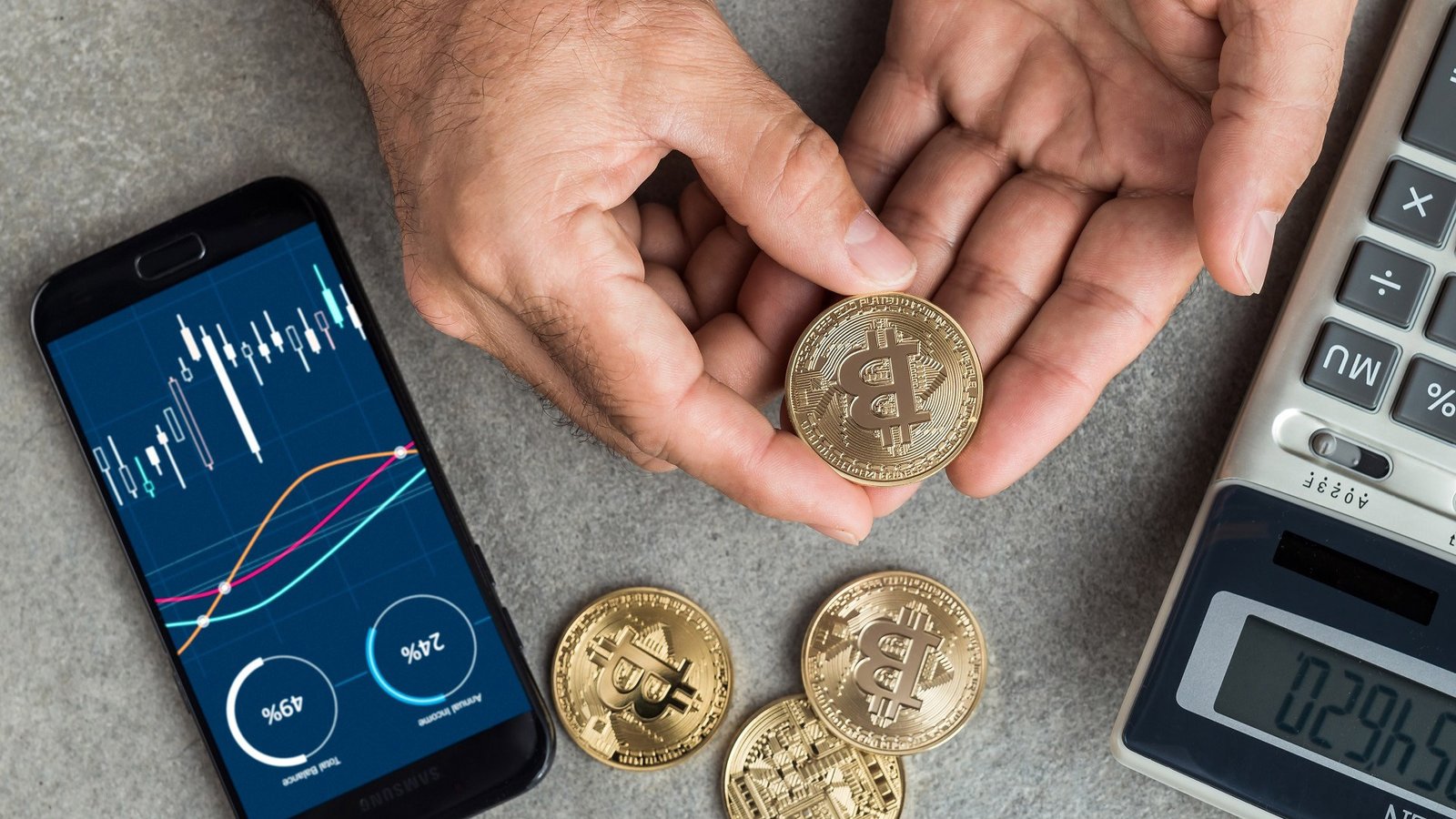The cryptocurrency landscape has evolved dramatically, making it more crucial than ever for both novice and experienced investors to find the best ways to invest in Bitcoin 2025. With Bitcoin reaching new institutional adoption milestones and regulatory clarity improving worldwide, 2025 presents unique opportunities for strategic Bitcoin investment. Whether you’re looking to diversify your portfolio or make bitcoin your primary investment vehicle, understanding the most effective approaches is essential for success. This comprehensive guide will walk you through proven strategies, risk management techniques, and expert insights to help you navigate the Bitcoin investment landscape confidently and profitably in 2025.
Why Bitcoin Investment Remains Attractive in 2025
Bitcoin continues to demonstrate its resilience and potential as a store of value and investment asset. The cryptocurrency has weathered multiple market cycles, regulatory challenges, and technological upgrades, emerging stronger each time. In 2025, several factors will make bitcoin investment particularly compelling.
The increasing institutional adoption by major corporations and financial institutions has legitimized Bitcoin as a mainstream asset class. Companies like Tesla, MicroStrategy, and Square have allocated significant portions of their treasury reserves to bitcoin, signaling confidence in its long-term value proposition.
Regulatory clarity has improved significantly across major markets, reducing uncertainty that previously deterred institutional investors. The approval of Bitcoin ETFs in multiple jurisdictions has created easier access for traditional investors who prefer regulated investment vehicles.
Bitcoin’s fixed supply of 21 million coins creates inherent scarcity that becomes more pronounced as adoption increases. This scarcity, combined with growing demand from both retail and institutional investors, creates favorable supply-demand dynamics for long-term price appreciation.
Best Ways to Invest in Bitcoin 2025: Proven Strategies

Dollar-Cost Averaging (DCA) Strategy
Dollar-cost averaging represents one of the most effective and beginner-friendly approaches to bitcoin investment. This strategy involves purchasing a fixed dollar amount of bitcoin at regular intervals, regardless of price fluctuations.
The DCA strategy helps mitigate timing risk and reduces the impact of volatility on your overall investment. By spreading purchases over time, you avoid the pressure of trying to time the market perfectly and benefit from both price dips and rallies.
Setting up automated DCA purchases through reputable exchanges like Coinbase, Kraken, or Binance makes this strategy effortless to maintain. Many investors choose weekly or monthly intervals, depending on their cash flow and investment goals.
Lump Sum Investment Approach
For investors with significant capital available and substantial conviction in bitcoin’s long-term prospects, lump-sum investing can be highly effective. This strategy involves investing a large amount at once rather than spreading purchases over time.
Historical data suggests that lump sum investing often outperforms dollar-cost averaging in trending markets, as it provides immediate exposure to potential gains. However, this approach requires careful timing and risk tolerance assessment.
Consider lump sum investing during major market corrections when bitcoin prices are significantly below previous highs. The key is having patience and conviction to hold through inevitable volatility periods.
Bitcoin Mining Investment
Bitcoin mining offers an alternative way to gain exposure to Bitcoin while potentially earning ongoing income. In 2025, mining has become increasingly sophisticated, with options ranging from home mining setups to cloud mining services.
For serious miners, investing in ASIC mining hardware and joining mining pools can provide steady bitcoin accumulation. However, electricity costs, hardware expenses, and technical complexity must be carefully considered.
Cloud mining services allow investors to purchase mining contracts without managing hardware directly. While convenient, these services often have lower profitability due to fees and contract terms.
Choosing the Right Bitcoin Investment Platform
Centralized Exchanges
Centralized exchanges remain the most popular choice for bitcoin investment due to their user-friendly interfaces and comprehensive features. Leading platforms like Coinbase Pro, Binance, and Kraken offer robust security measures, insurance coverage, and various trading options.
When selecting an exchange, consider factors such as security track record, fee structure, available payment methods, and regulatory compliance. Established exchanges with strong reputations typically offer better protection for your investments.
Many centralized exchanges now offer additional services like staking, lending, and savings accounts that allow you to earn yield on your bitcoin holdings while maintaining liquidity.
Decentralized Exchanges (DEX)
Decentralized exchanges provide greater privacy and control over your Bitcoin investments by eliminating intermediaries. Platforms like Uniswap, SushiSwap, and PancakeSwap allow direct peer-to-peer trading using smart contracts.
While DEX platforms offer enhanced privacy and reduced counterparty risk, they typically require more technical knowledge and may have lower liquidity for bitcoin trading pairs. Gas fees can also be significant during network congestion periods.
For privacy-conscious investors or those seeking to maintain complete control over their assets, DEX platforms represent a viable alternative to centralized exchanges.
Bitcoin ETFs and Mutual Funds
Bitcoin Exchange-Traded Funds (ETFs) and mutual funds provide traditional investors with familiar investment vehicles for bitcoin exposure. These regulated products trade on conventional stock exchanges and offer professional management.
Bitcoin ETFs eliminate the need for direct bitcoin custody while providing exposure to price movements. They’re particularly suitable for retirement accounts and institutional investors who prefer traditional investment structures.
However, ETFs typically charge management fees and may not perfectly track bitcoin prices due to premiums, discounts, and tracking errors. Direct bitcoin ownership often provides better long-term returns for individual investors.
Risk Management Strategies for Bitcoin Investment
Portfolio Allocation Guidelines
Determining the appropriate bitcoin allocation within your overall investment portfolio is crucial for risk management. Financial advisors typically recommend allocating 5-10% of total portfolio value to bitcoin and other cryptocurrencies.
Conservative investors might start with 1-3% allocation, while more aggressive investors comfortable with volatility might allocate 10-20% or more. The key is never investing more than you can afford to lose entirely.
Consider your age, risk tolerance, investment timeline, and financial goals when determining allocation percentages. Younger investors with longer time horizons can typically afford higher bitcoin allocations.
Setting Stop-Loss Orders
Stop-loss orders can help limit potential losses during significant market downturns. These orders automatically sell your bitcoin when prices fall below predetermined levels, protecting against catastrophic losses.
However, bitcoin’s volatility can trigger stop-loss orders during normal market fluctuations, potentially causing you to sell at temporary lows. Careful consideration of stop-loss levels is essential to avoid premature exits.
Trailing stop-losses that adjust upward with price increases can help lock in profits while maintaining upside potential. This approach allows participation in bull runs while providing downside protection.
Diversification Within Cryptocurrency
While bitcoin remains the dominant cryptocurrency, diversifying within the crypto ecosystem can provide additional opportunities and risk reduction. Consider allocating portions of your crypto investment to established altcoins like Ethereum, Solana, or Cardano.
Diversification should be strategic rather than random. Focus on cryptocurrencies with strong fundamentals, active development communities, and clear use cases. Avoid overinvesting in highly speculative or meme-based tokens.
Maintain Bitcoin as your core cryptocurrency holding while using smaller allocations for altcoin diversification. This approach provides stability while capturing potential upside from emerging blockchain technologies.
Security Best Practices for Bitcoin Investment

Hardware Wallet Storage
Hardware wallets represent the gold standard for Bitcoin security, providing offline storage that protects against online threats. Popular options include Ledger Nano X, Trezor Model T, and KeepKey devices.
These devices store your private keys offline and require physical confirmation for transactions, making them virtually immune to hacking attempts. They’re essential for investors holding significant amounts of bitcoin long-term.
Always purchase hardware wallets directly from manufacturers to avoid tampering. Set up strong PINs, enable passphrase protection, and store recovery seeds securely in multiple physical locations.
Multi-Signature Wallets
Multi-signature wallets require multiple private key signatures to authorize Bitcoin transactions, providing enhanced security for extensive holdings. This approach distributes control among various devices or parties, reducing single points of failure.
Setting up multi-sig wallets requires technical knowledge but offers institutional-grade security for serious investors. Services like Casa and Unchained Capital provide user-friendly multi-sig solutions.
Consider 2-of-3 multi-sig setups where you control two keys and a trusted service holds the third, or 3-of-5 setups for maximum security and redundancy.
Backup and Recovery Procedures
Proper backup procedures are essential for protecting your Bitcoin investments against device failure, loss, or damage. Create multiple copies of recovery seeds and store them in secure, geographically distributed locations.
Use metal seed storage devices to protect against fire, water, and other environmental hazards. Avoid digital storage of recovery phrases, as this creates additional attack vectors.
Periodically test recovery procedures using small amounts to ensure your backup systems work correctly. Consider involving trusted family members in recovery planning for estate purposes.
Tax Implications of Bitcoin Investment
Capital Gains Tax Considerations
Bitcoin investments are subject to capital gains taxation in most jurisdictions, with rates depending on holding periods and total gains. Long-term capital gains (holdings over one year) typically receive preferential tax treatment compared to short-term profits.
Keep detailed records of all bitcoin purchases, sales, and transfers to calculate tax obligations accurately. Use cost-basis tracking tools like CoinTracker or TaxBit to simplify tax preparation.
Consider tax-loss harvesting strategies during market downturns to offset gains with losses, reducing overall tax liability. However, be aware of wash sale rules that may apply to cryptocurrency transactions.
Tax-Advantaged Account Strategies
Some retirement accounts and tax-advantaged savings vehicles allow bitcoin investment through ETFs or specialized custodians. These accounts can provide significant tax benefits for long-term bitcoin investors.
Self-directed IRAs and 401(k)s may allow direct bitcoin investment through qualified custodians, enabling tax-deferred or tax-free growth depending on account type.
Consult with tax professionals familiar with cryptocurrency regulations to ensure compliance and optimize tax strategies for your specific situation.
Timing Your Bitcoin Investment in 2025
Market Cycle Analysis
Understanding bitcoin’s historical market cycles can inform investment timing decisions. Bitcoin has demonstrated roughly four-year cycles corresponding to halving events that reduce mining rewards.
The 2024 halving event has historically led to bull markets in subsequent years, suggesting 2025 could present favorable investment conditions. However, past performance doesn’t guarantee future results.
Combine cycle analysis with fundamental analysis of adoption trends, regulatory developments, and macroeconomic factors for comprehensive market timing strategies.
Technical Analysis Tools
Technical analysis can help identify potential entry and exit points for Bitcoin investments. Key indicators include moving averages, RSI, MACD, and support/resistance levels.
While technical analysis can provide valuable insights, Bitcoin’s volatility and relatively short history limit the reliability of traditional technical indicators. Use technical analysis as one factor among many in investment decisions.
Fundamental analysis focusing on adoption metrics, network activity, and institutional investment flows often provides better long-term investment guidance than purely technical approaches.
Common Bitcoin Investment Mistakes to Avoid
Emotional Trading Decisions
Fear of missing out (FOMO) and panic selling represent the most common mistakes in bitcoin investment. Emotional decisions often lead to buying high during euphoric periods and selling low during market downturns.
Develop and stick to predetermined investment strategies regardless of short-term market movements. Set clear goals, timelines, and exit criteria before investing to avoid emotional decision-making.
Consider using automated investment tools and limit orders to remove emotion from trading decisions. Regular portfolio reviews should focus on long-term progress rather than daily price movements.
Inadequate Security Measures
Many bitcoin investors lose funds due to inadequate security practices rather than market downturns. Exchange hacks, phishing attacks, and lost private keys have resulted in billions of dollars in losses.
Never store significant bitcoin amounts on exchanges for extended periods. Use strong, unique passwords and enable two-factor authentication on all accounts.
Educate yourself about common scams and attack vectors in the cryptocurrency space. Be skeptical of unsolicited investment opportunities or requests for private key information.
Overinvestment and Leverage
Investing more than you can afford to lose or using excessive leverage amplifies both potential gains and losses. Bitcoin’s volatility can lead to the complete loss of leveraged positions during market downturns.
Maintain emergency funds and diversified investment portfolios outside of Bitcoin. Never borrow money or use credit cards to purchase bitcoin, as this creates additional financial stress and risk.
Start with small investments to gain experience and comfort with bitcoin’s volatility before increasing position sizes. Gradual scaling allows you to learn from mistakes without significant financial consequences.
Future Outlook for Bitcoin Investment
H3: Institutional Adoption Trends
Corporate treasury adoption of bitcoin continues expanding as companies seek inflation hedges and portfolio diversification. This institutional demand provides fundamental support for bitcoin prices.
Traditional financial institutions are developing bitcoin custody, trading, and advisory services for their clients. This infrastructure development makes Bitcoin more accessible to mainstream investors.
Central bank digital currencies (CBDCs) may increase bitcoin adoption by familiarizing populations with digital currencies while highlighting bitcoin’s decentralized advantages.
Regulatory Environment Evolution
Regulatory clarity continues improving globally, with many countries developing comprehensive cryptocurrency frameworks. Clear regulations reduce uncertainty and encourage institutional participation.
However, regulatory risks remain, particularly regarding privacy features, environmental concerns, and monetary policy implications. Stay informed about regulatory developments in your jurisdiction.
Compliance costs and reporting requirements may increase, but regulatory legitimacy should support long-term bitcoin adoption and price stability.
Technological Developments
Bitcoin’s Lightning Network and other layer-2 solutions are improving transaction speed and cost, enhancing Bitcoin’s utility for everyday transactions and micropayments.
Taproot and other protocol upgrades enhance privacy and innovative contract capabilities while maintaining Bitcoin’s security and decentralization principles.
Integration with traditional financial systems through APIs and banking partnerships makes Bitcoin more accessible and valuable for mainstream adoption.
Conclusion
Navigating the best ways to invest in Bitcoin 2025 requires careful planning, risk management, and ongoing education. Whether you choose dollar-cost averaging, lump sum investing, or alternative approaches like mining, success depends on matching your strategy to your risk tolerance and financial goals.
The key principles remain consistent: invest only what you can afford to lose, prioritize security through proper storage solutions, diversify your approach, and maintain a long-term perspective despite short-term volatility. As bitcoin continues maturing as an asset class, early and strategic investors position themselves for potentially significant returns.
















